 Does your company work with influencers?
Does your company work with influencers?
Want to incorporate influencers into your marketing?
To discover what you need to know about influencer marketing, I interview Lee Odden.
More About This Show
The Social Media Marketing podcast is an on-demand talk radio show from Social Media Examiner. It's designed to help busy marketers and business owners discover what works with social media marketing.
In this episode, I interview Lee Odden, an influencer marketing expert. He's the author of Optimize, the CEO of TopRank Marketing, and his company produces TopRankBlog.com.
Lee explores influencer marketing and what you need to know to do it well.
You'll discover how to work with influencers.
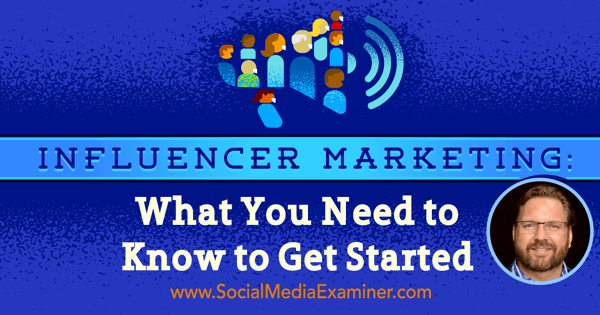
Share your feedback, read the show notes, and get the links mentioned in this episode below.
Listen Now
Where to subscribe: Apple Podcasts | Spotify | YouTube Music | YouTube | Amazon Music | RSS
Here are some of the things you'll discover in this show:
Influencer Marketing
What is influencer marketing?
Lee says the roots of influencer marketing are in advocacy and public relations organizations. You're essentially working with people who are really famous in an industry. The idea is to create an affinity for the brand for however that celebrity is known, and to reach the audience that celebrity has been able to attract.
Lee adds that people still have the idea that if they convince famous people to talk about their company, then they'll be famous too.
The reality is that, today, especially in the world of social media, people are empowered to follow their passions to create, curate, connect with others, and attract a following. This allows people to create their own influence. Everyone is influential about something, Lee says.
Get World-Class Marketing Training — All Year Long!
Are you facing doubt, uncertainty, or overwhelm? The Social Media Marketing Society can help.
Each month, you’ll receive training from trusted marketing experts, covering everything from AI to organic social marketing. When you join, you’ll also get immediate access to:
- A library of 100+ marketing trainings
- A community of like-minded marketers
- Monthly online community meetups
- Relevant news and trends updates
Not just famous people can be part of your influencer marketing program. An influencer can be an employee like “Ted in engineering,” who has a blog with 5,000 subscribers. Or, it could be that person with a million followers. It could even be customers who are advocating for you every chance they get. When you work with people who have subject matter expertise and an active network, you can advance your brand goals in some really powerful ways.
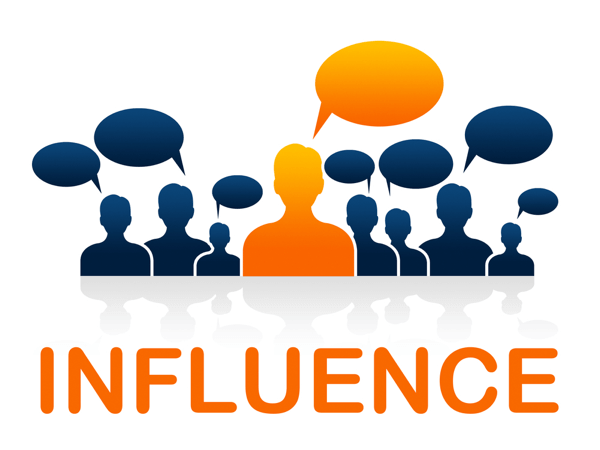
On platforms like YouTube, Instagram, and Snapchat, there's a whole category of people called creators. They have various levels of celebrity, influence, or network size, and have anointed themselves as experts. There are marketplaces where brands can go and literally shop for a tweet, an Instagram image, product placement in a YouTube video, etc. For companies in the business of paying to play, it's a good fit.
There are also brands that want to develop relationships with people who are truly thought leaders in their industry, or up-and-comers. They want to develop relationships, because they have an affinity for each other and have things their common audiences care about. There's no right or wrong, but it's important when setting expectations to know what you're going to get out of it.
What is the distinction between a celebrity and a thought leader? Lee brought up an expression he borrowed from Scott Monty, “brandividual.” This is someone truly invested in developing his or her own brand, except they're an individual. These professional influencers write books, give keynotes, and do all sorts of amazing things.
Lee adds it's an important distinction to make between someone who is exclusively focused on being well-known and someone who is a true thought leader. He's not saying a brandividual can't be a thought leader. A thought leader is someone expressing original thought. They're creating content based on intelligence, experimentation, and observations.
Brian Solis is a great example of a thought leader, Lee says. In addition to being really good at promoting himself, Brian is constantly experimenting. He does research. He interviews. And then collects, analyzes, and interprets the data. His experiments and experiences help form the thought leader content that Brian publishes.
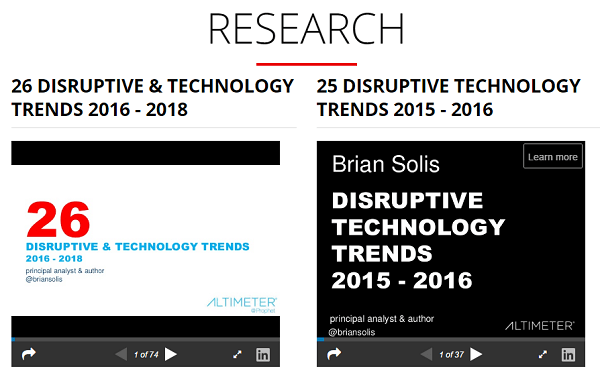
Just as important as expressing interests and creating content is doing it in a way that inspires others to act. Sam Fiorella made that point to Lee early in his formal studies around influencer marketing.
Look at an individual like “Ted in engineering” who has 5,000 subscribers. Now compare him to someone like Gary Vaynerchuk, who has millions of followers. Gary is an exception, because proportionate to his large following, he has a high degree of engagement. He's a very unique individual. However, that's not always the case. Someone in a niche who gets people to pay attention and act is an influencer.
It's much better to have 50 of 500 followers engaged and taking action, than only a handful of people paying attention to someone with 100,000 followers. The smaller network size is better, since it has more action, engagement, and outcomes.
Listen to the show to learn how Lee got into influencer marketing.
The benefits of influencer marketing
Lee says brands work with influencers to tap into their subject matter expertise, community reach, and often their skills, which are relevant to their marketing or business goal.

Lee says brands are focused on working with influencers in the context of content, because it's tangible. Quality, authentic, credible content resonates with the community, since it has the voice of the customer in it.
Also, you can reach people your brand might not otherwise be able to reach. Ad blocking and numbness to advertising and marketing are big issues. People trust those they know (experts, peers, and folks they're connected to on their social networks) more than advertisers, so influencers can play a role there.
Tomoson did a study that showed that businesses that implemented influencer programs get nearly a 7:1 return in advertising value. There are a lot of other benefits, but fundamentally it's about reach, quality, and expertise from influencers.
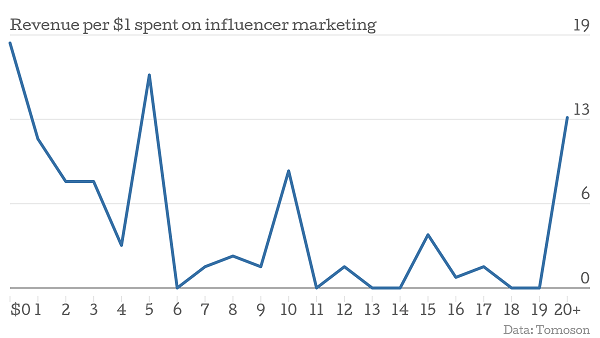
Another study showed better quality customers, shortened sales cycles, and (Lee's favorite) the prospect influencer. In the B2B world there are people who work at companies that would be great for collaboration. If the person or the brand has a degree of influence, invite them to make something together in terms of content.
Lee's company has created conference ebooks and done other projects with prospect influencers. The benefit is that it helps you create a relationship with someone with whom you would like to work. You're creating value and demonstrating your own expertise by making something together and creating an experience.
“That's one of the best benefits of all, especially in B2B,” Lee says.
For over five years, Lee has worked with various events and brands to identify influencers to co-create content for the community at large. They pick a topic, drill down to the specifics, and invite influencers to be a part of making a useful resource. Usually, there's a theme of some kind. Rock n Roll, surfing, etc.
Listen to the show to hear about the surfing-themed book we did with Lee from Social Media Marketing World.
Getting started
First, identify your expectations or what you want to get out of working with influencers. If it's sales, that's fine. Just realize you're going to pay to play. It's a relationship game and it's long-term, Lee adds. When you do a campaign, you need something that goes along with it, like a nurturing effort. Take that awareness, build it into consideration, and it ultimately turn it into purchase or a transaction.

Also think about what role your work with influencers is going to play in your overall marketing and how you'll measure success.
What is realistic in terms of goals with influencers? Lee says it's like a force multiplier to your content marketing, in that it accelerates the reach. It shortens sales cycles, but you need something to sell. You've got to have something that solves people's problems.
Goals are not universal, Lee continues. It's like asking, “What's the benefit of marketing?” The answer is it depends. There are different kinds of companies, audiences, and things that are being sold. Influencer marketing is no different. It brings credible people to the table in creating or promoting content, which lowers barriers and lubricates the speed at which messages are received by audiences.
Influencer content can play a role at any stage during the buying cycle, whether it's creating awareness, part of consideration and evaluation, a transaction, or even around retention or advocacy. Any marketing goals you have can be applied to influencer marketing.
Listen to the show to discover the simplest way to use influencers.
How to identify influencers
Although you may have an intuitive sense of who is influential in your industry, there are also ways to find influencers. In the same way you might do keyword research (input words and ideas into Google's Keyword Planner and it spits back related keywords), you can do research with an influencer discovery tool.
After you decide what you want to be known for (what words represent the campaign or effort), put them into an influencer discovery tool. It will then come back with a list, like search results of people who are influential about that topic.

For instance, BuzzSumo has an influencer search function. You can also use GroupHigh (a paid tool) to specifically find bloggers. There's also Traackr.com (a client of Lee's), which is more of a premium service.
These all work the same way. Pop in words, and it sends back a list of people who are influential about those things and their social networks. They all use some kind of scoring system, too.
Lee adds it's import not to evaluate based on network size. Don't go with the most popular people. Look for a combination of reach, relevance, and resonance, which has to do with how well that person's audience reacts to what he or she publishes.
More tools include Little Bird and ScribbleLive. Plus, TopRankBlog will be publishing a list of 50 influencer marketing platforms soon.

Discover Proven Marketing Strategies and Tips
Want to go even deeper with your marketing? Check out the Social Media Marketing Podcast! Publishing weekly since 2012, the Social Media Marketing Podcast helps you navigate the constantly changing marketing jungle, with expert interviews from marketing pros.
But don’t let the name fool you. This show is about a lot more than just social media marketing. With over 600 episodes and millions of downloads each year, this show has been a trusted source for marketers for well over a decade.
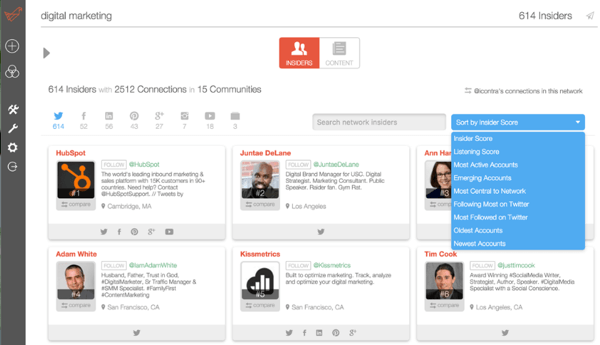
Listen to the podcast to hear Lee's take on these various tools and the progression of using them.
Reaching out
If people show up in an influencer discovery tool, it means they're creating content, whether it's tweets, images, or blog posts. That content can give you signals as to how to approach them. You can often tell if someone is interested in having awareness, as they spend a lot of time trying to get visibility for themselves.
Lee loves using content creation as the invitation for collaboration.
Make a list of the top 10 people in a certain industry, he suggests. Then, write a post about them, giving legitimate reasons why they're amazing. Go to these influencers and tell them you included them in this list and thank them for everything they do.
After the list publishes, go back to them and tell them you're creating a resource and you'd like them to provide the answer to one question for it. You ask, they answer, and now you have a robust blog post featuring several influencers. Later on, you can perhaps go back and ask a few questions this time. You've now developed a relationship based on value you created for them with these exposure opportunities.
Although these types of interviews are mostly done online, you can give busy influencer the option of doing it over the phone or sending you an audio message with answers through Facebook, Twitter, LinkedIn messaging, or even email.
If you have no visibility and are starting from scratch, finding influencers will be a challenge. However, if you've built up your reputation (you're advertising, actively speaking, and creating content, etc., or are making a concerted effort to do so), the chances of them saying yes is much greater. Be funny, succinct, and to the point with what's in it for them when you do your outreach.
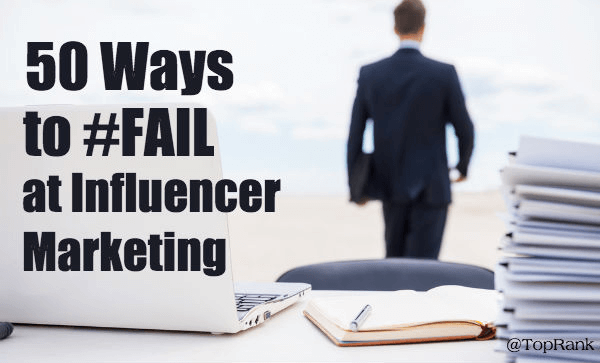
Lee admits they've made mistakes over the years. Just like in the song, “50 Ways to Leave your Lover,” they documented 50 ways to fail at influencer marketing. This collaboration with influencers was repurposed into an ebook.
Discover a way to create value, Lee says. Determine what the influencer isn't getting and find a way to give it to him or her. For instance, if Lee sees people actively speaking at conferences, being quoted, or writing articles in business magazine websites, Lee's pretty sure if he can get them exposure on a really credible website, it will be attractive to them.
Listen to the show to discover how name-dropping helps woo influencers.
Paying influencers
Lee believes folks who are in high demand deserve to be compensated. They have a lot of skill, bring a lot to the table, and have demonstrated their ability to affect outcomes or create impact.
If you're working with an up-and-coming influencer, asking him or her to do something fairly easy (like answer one question or use a quote from another article in a curated post), that's just a value exchange. Also, if your brand is well-respected in the industry, a lot of those influencers will want to be associated with you. Those things don't require payment.
However, influencer marketplaces, like Tapinfluence, Crowdtap, and Webfluential are advertising platforms. You're shopping for someone to post a photo on Instagram, do a YouTube video for you, or send a tweet. And it's going to cost you. This is a good fit for companies that look at influencer marketing as advertising.

Even if you don't use a marketplace, Lee says if you're working with an established influencer it's important to pay for their time. You may not have a lot of money, and that's okay. At least tell the influencer you don't have a large budget, but you'd like to pay them something (a nominal amount) as a thank-you.
It could be $500 or $1,000 for someone who normally gets paid $10,000 to $20,000 for a one-hour keynote. The bigger the ask, the more you should think about compensation. You're not just giving an influencer money, you're making an investment. It doesn't have to be a lot, but there's a big difference between zero and $500 or $1,000.
Listen to the show to hear the other benefit to paying influencers.
Disclosures
Any time a brand gives something of value to the influencer, there has to be a disclosure, whether it's money, a favor, or a freebie. You can disclose at the beginning or the end.
Lee talks about an influencer program they were running for Dell for Power More. Technology influencers would write for them and publish on their own blog. The same post would be published on the Dell content hub. There was a very long legalese disclaimer on their posts.
On the less formal end of the spectrum, if you sent socks to a blogger and that blogger says, “Look at these socks that I got from this company,” that is also a disclosure.
Listen to the show to discover in what circumstances no disclosures are needed.
Discovery of the Week
Google Photos, which is an app that works on both iOS and Android, allows unlimited uploads of your photos into the Cloud.
If you have a Google account, you can upload full-resolution photos from your phone and it takes up space on your Google account. However, if you upload your pics as high-resolution images, it's unlimited and it's free.

Not only does uploading your images to Google Photos free up space on your mobile device, the search is amazing. It allows you to easily locate exactly whatever you want.
Google's smart algorithm looks at your pictures and labels them. For example, I can look at the cities Google thinks are in my library and zoom in on them. I can type in and search for mountain shots, screenshots, or selfies; look for things like food, sky, and long hair; and search for activities like concerts, stadiums, backpacking, birthdays, Christmas, and Halloween.
When you do a search for someone and then click on a face, all the pictures you've ever taken of that person are shown.
Google Photos allows you to rapidly locate things you're interested in. If you're looking for something in the past and don't remember when it happened, previously you needed to scroll through thousands of pictures to figure it out. Now, all you need to do is search inside the Google Photos app.
Check out Google Photos. It's completely free.
Listen to the show to learn more and let us know how the Google Photos works for you.
Listen to the show!
Key takeaways mentioned in this episode:
- Learn more about Lee on his website.
- Follow @LeeOdden and @WinfluencerMktg on Twitter.
- Read Optimize.
- Explore the origins of influencer marketing.
- Learn more about Scott Monty and the term “brandividual.”
- Check out Brian Solis' research, Sam Fiorella, and Gary Vaynerchuk.
- Take a look at Tomoson's influencer marketing study.
- Explore Google's Keyword Planner.
- Check out influencer discovery tools BuzzSumo, GroupHigh, Traackr.com, Little Bird, and ScribbleLive.
- Watch the video for the song, “50 Ways to Leave your Lover” and read the 50 Ways to #FAIL at Influencer Marketing ebook.
- Explore influencer marketplaces like Tapinfluence, Crowdtap, and Webfluential.
- Learn more about Dell for Power More.
- Check out Google Photos.
- Follow me, subscribe, and listen to the Social Media Examiner weekly blabs.
- Read the 2016 Social Media Marketing Industry Report.
Help Us Spread the Word!
Please let your Twitter followers know about this podcast. Simply click here now to post a tweet.
If you enjoyed this episode of the Social Media Marketing podcast, please head over to iTunes, leave a rating, write a review and subscribe. And if you listen on Stitcher, please click here to rate and review this show.
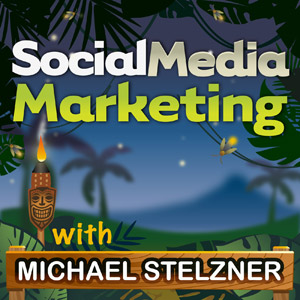
Ways to subscribe to the Social Media Marketing podcast:
- Click here to subscribe via iTunes.
- Click here to subscribe via RSS (non-iTunes feed).
- You can also subscribe via Stitcher.
What do you think? What are your thoughts on influencer marketing? Please leave your comments below.
Influence photo, Expertise photo, Goals photo from Shutterstock.
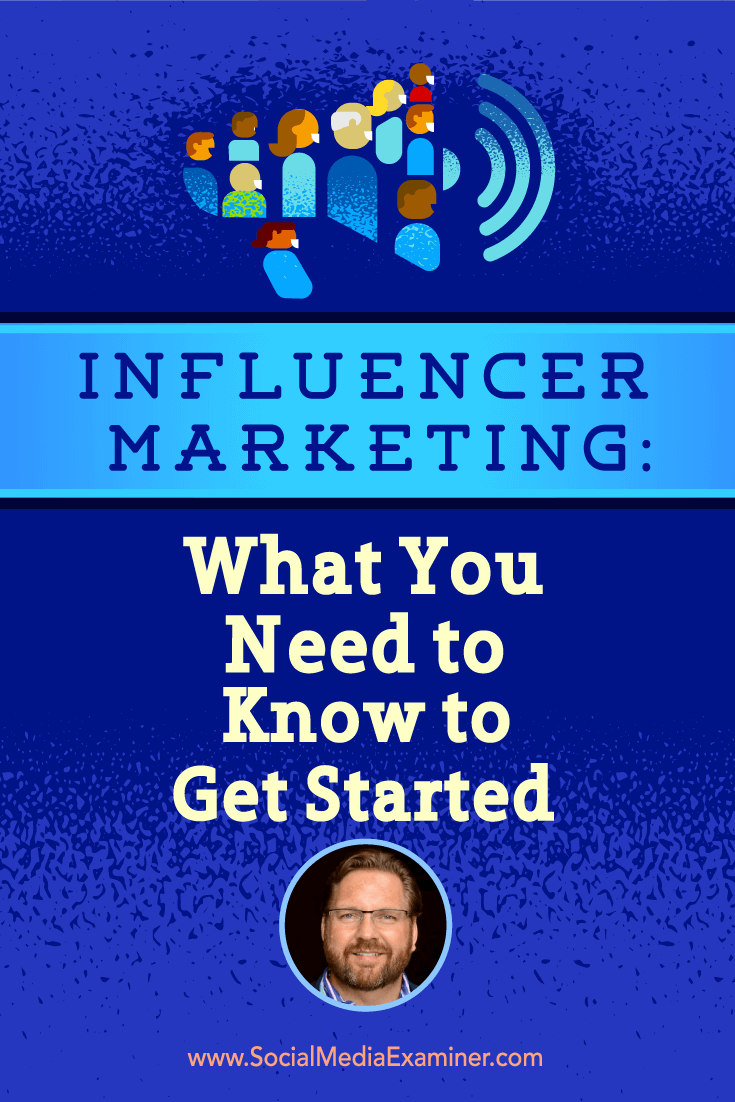
Attention Agency Owners, Brand Marketers, and Consultants

Introducing the Marketing Agency Show–our newest podcast designed to explore the struggles of agency marketers.
Join show host and agency owner, Brooke Sellas, as she interviews agency marketers and digs deep into their biggest challenges. Explore topics like navigating rough economic times, leveraging AI, service diversification, client acquisition, and much more.
Just pull up your favorite podcast app, search for Marketing Agency Show and start listening. Or click the button below for more information.

